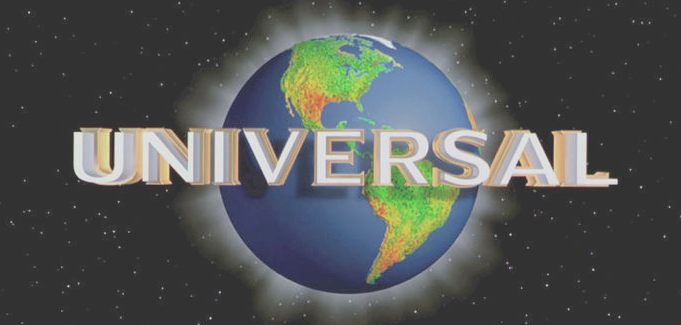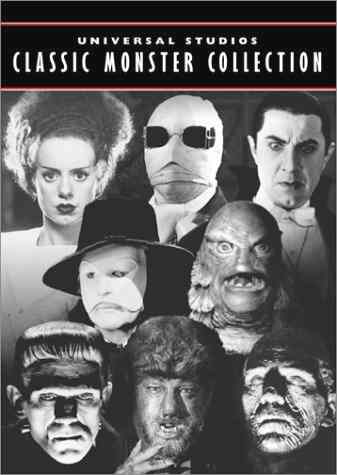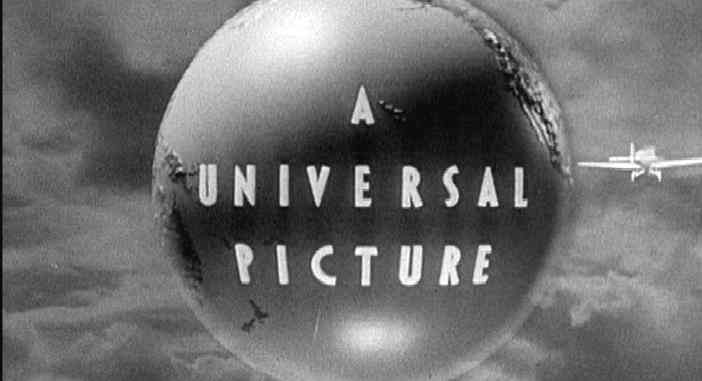|
UNIVERSAL PICTURES
|
|||||
|
HOME | BIOLOGY | FILMS | GEOGRAPHY | HISTORY | INDEX | MUSIC | SOLAR BOATS | SPORT | SPONSORS |
|||||
|
Universal Studios, a subsidiary of NBC Universal, is a Big Ten movie studio that has production studios and offices located at 100 Universal City Plaza Drive in Universal City, California, an unincorporated area of Los Angeles County between Los Angeles and Burbank. Distribution and other corporate, administrative offices are based in New York City. Universal is the second longest-lived studio in Hollywood (Viacom's Paramount Pictures is the first longest).
History
The second longest-lived Hollywood film production company, Universal Pictures can trace its origins back to the creation in 1909 of a predecessor, the Yankee Film Company. The founder of Universal, Carl Laemmle, was a German Jewish immigrant who had settled in Wisconsin, where he managed a clothing store. Carl Laemmle partnered with Abe Stern and Julius Stern to create Universal Pictures. On a 1905 buying trip to Chicago, he was struck by the popularity of nickelodeons. One story has Laemmle watching a box office for hours, counting patrons and calculating the take for the day. Within weeks of his Chicago trip, he gave up dry goods to buy the first of several nickelodeons. For Laemmle and other such entrepreneurs, the creation in 1908 of the Edison-backed Motion Picture Trust meant that exhibitors were expected to pay fees for any Trust-produced film they showed. On the basis of Edison's patent on the electric motor used in cameras and projectors, along with other patents, the Trust collected fees on all aspects of movie production and exhibition, and also held a monopoly on distribution.
Soon Laemmle and other disgruntled nickelodeon owners saw that a way to avoid paying Edison was to produce their own pictures, and in June 1909, Laemmle and partners started the Yankee Film Company. That company quickly evolved into the "Independent Moving Picture Company", or IMP; and a further reorganization in 1911 saw IMP reincorporate as the "Universal Film Manufacturing Co.," on June 8, 1912, introducing the word "universal" into the organization's name. While Laemmle was the primary figure in Universal, by absorbing several smaller firms he acquired a number of partners, among them Mark Dintinfass, Charles Baumann and Adam Kessel, and Pat Powers. Eventually all would be bought out by Laemmle. Film production and distribution were the Universal company's activities.
The new Universal company was an immediate success, in part because Laemmle broke with Edison's custom of refusing credit to actors. By naming the stars of films, he was able to attract many of the leading players of the time, and contributed to the creation of the star system. Most notably, in 1910, he actively promoted Florence Lawrence, then known as the "Biograph girl", in what may be the first instance of a studio using a film star in its marketing.
Following the westward trend of the industry, in 1915, Laemmle opened the world's largest motion picture production facility, Universal City Studios, on a 230-acre (0.9 km˛) converted farm just over the Cahuenga Pass from Hollywood. Studio management now became the third facet of Universal's operations, with the studio incorporated as a distinct subsidiary organization.
Despite Laemmle's role as an innovator, as a studio head he was extremely cautious, and within a few years the rapidly expanding film business had passed him by. Unlike rivals Adolph Zukor, William Fox and Marcus Loew, Laemmle chose not to develop a theater chain. He also financed all of his own films, refusing to take on debt. By the early 1920s, as the other studios soared, Universal was decidedly in the second rank. Content with a market in small towns, its product was primarily melodramas, cheap westerns, and serials. For a few years in the early twenties the young producer Irving Thalberg tried to improve the quality of Universal's output, but he left in 1923 for a better opportunity with the Louis B. Mayer company.
DVD cover showing characters made famous by Universal Studios. Elsa Lanchester from Bride of Frankenstein (1935), Claude Rains from The Invisible Man (1933), Bela Lugosi from Dracula (1931), Claude Rains from Phantom of the Opera (1943), "The Creature" from Creature from the Black Lagoon (1954), Boris Karloff from Frankenstein (1931), Lon Chaney Jr. from The Wolf Man (1941) and Boris Karloff from The Mummy (1932)
In 1926, Universal also opened a production unit in Germany, Deutsche Universal-Film AG, under production direction of Joe Pasternak. This unit produced 3–4 films per year until 1936, migrating to Hungary and then Austria in the face of Hitler's increasing domination of central Europe. With the advent of sound, these productions were made in the German language or, occasionally, Hungarian or Polish. In the USA, Universal Pictures did not distribute any of this subsidiary's films, but at least some of them were exhibited through other, independent, foreign-language film distributors based in New York, without benefit of English subtitles. Nazi persecution and a change in ownership for the parent Universal Pictures organization resulted in the dissolution of this subsidiary.
Carl Laemmle, Jr. benefited from one of the greatest acts of nepotism in Hollywood history when his father handed him the keys to—and control of—Universal City as a 21st birthday gift in 1928. To his credit, Laemmle, Jr. saw what his father could not, and acted at once to bring Universal up to date. Laemmle, Jr. bought and built theaters, converted the studio to sound production, and upgraded the quality of production. His early efforts included the 1929 version of Show Boat, the first color musical; King of Jazz; and All Quiet on the Western Front, winner of the "Best Picture" award for 1930. Laemmle, Jr. also created a successful niche for the studio, beginning a long-running series of horror classics, among them Frankenstein, Dracula, and The Mummy. Other Laemmle productions of this period include Imitation of Life and My Man Godfrey.
Taking on the task of modernizing and upgrading a film conglomerate in the depths of the depression was risky, and for a time Universal slipped into receivership. The theater chain was scrapped, but Laemmle Jr. held fast to distribution, studio and production operations. His intentions to upgrade production resulted in a lavish remake of Show Boat, featuring several stars from the Broadway stage version, which began production in late 1935 and was released in May, 1936. This would prove to be a costly production for the studio, and for the Laemmle family. Throughout its twenty-plus years' existence, Universal had never borrowed money; to complete production on "Show Boat" the studio turned to the Standard Chartered Bank for a $750,000 production loan. When production dragged on, a cash-strapped studio could not repay the loan, and the bank foreclosed, claiming the pledged collateral, the Laemmle family's stock in (and therefore control of) Universal Pictures Company Inc.
Despite the fact that the 1936 "Show Boat" turned out to be a critically acclaimed box-office hit, the Laemmles were unceremoniously removed from all association with the company, and the new owners instituted severe cuts in production budgets. Gone were the big ambitions, and though Universal had few big names under contract, those it had been cultivating, like William Wyler and Margaret Sullavan, now left. By the start of World War II, the company was concentrating on small-budget production of the fare that had once been Universal's sidelines: westerns, melodramas, serials and sequels to the studio's horror classics. Only the films of young singer Deanna Durbin were given reasonably high budgets, under the control of Joe Pasternak upon his emigration from Europe; if any one star can be said to have kept Universal in business during the late 1930s, it was Durbin, despite her often being woefully miscast as a young teenager when she was, clearly, a fully adult woman. Fortunately, just when Durbin outgrew her screen persona, the studio signed the comedy team of Abbott and Costello (Bud Abbott and Lou Costello) to a long-term contract. A string of low-budget hits beginning with "Buck Privates" (1941) placed Abbott and Costello among the top box office draws in the country, improving Universal's bottom line even more than Durbin's glossy productions had. Other low and medium budget fare dominated through the years of World War II, when the studio's roster included many cast-off Paramount players like Mae West, W.C. Fields, and Marlene Dietrich. The studio also churned out various sequels for each of its monsters. During the war years Universal did have a co-production arrangement with producer Walter Wanger and his partner, director Fritz Lang, but their pictures were a small bit of quality in a schedule dominated by the likes of Cobra Woman and Frontier Gal.
After the War, looking to expand his American presence, the British entrepreneur J. Arthur Rank bought a one-fourth interest in Universal in 1945. While trying to improve the quality of the studio's output, he instigated a merger in 1946 with a struggling American independent production company, International Pictures. William Goetz, a founder of International, was made head of production at the renamed (as Universal-International Pictures Inc.) production arm of the Universal Pictures complex (distribution and copyright control remained under the name of Universal Pictures Company Inc.; Universal-International Pictures additionally served Universal as an import-export subsidiary, and copyright holder for the production arm's films), and he set out an ambitious schedule. While there were to be a few hits like The Egg & I, The Killers, and The Naked City, the studio still struggled. By the late 1940s, Goetz was out, and the studio reverted once more to the low-budget fare it knew best. Once again, the films of Abbott and Costello, including Abbott and Costello Meet Frankenstein, were among the studio's top-grossing productions. But at this point Rank lost interest and sold his shares to the investor Milton Rackmil, whose Decca Records would take full control of Universal in 1952.
Though Decca would continue to keep picture-budgets lean, they were favored by changing circumstances in the film business, as other studios let their contract-actors go in the wake of the 1948 U.S. vs. Paramount Pictures, et al. case. Leading actors were increasingly free to work where and when they chose, and in 1950 MCA agent Lew Wasserman made a deal with Universal for his client James Stewart that would change the rules of the business. Wasserman's deal gave Stewart a share in the profits of three pictures in lieu of a large salary. When one of those films, Winchester '73 proved to be a hit, Stewart became a rich man. This kind of arrangement would become the rule for many future productions at Universal, and eventually at other studios as well.
By the late 1950s, the motion picture business was in trouble. The combination of the studio/theater-chain break-up and the rise of television saw the mass audience drift away, probably forever. Talent agent MCA had also become a powerful television producer, renting space at Republic Studios for its Revue Studios subsidiary. After a period of complete shutdown, a moribund Universal agreed to sell its (by now) 360-acre (1.5 km˛) studio lot to MCA in 1958, for $11 million. Although MCA owned the studio lot, but not Universal Pictures, it was increasingly influential on Universal's product. The studio lot was upgraded and modernized, while MCA clients like Doris Day, Lana Turner, and Cary Grant were signed to Universal Pictures contracts.
The actual, long-awaited takeover of Universal Pictures by MCA finally took place in mid-1962, and the production subsidiary reverted in name to Universal Pictures, while the parent company became MCA/Universal Pictures Inc. Universal-International Pictures Inc. remained a subsidiary only engaged in export/international release of Universal product. In addition, Revue Studios became known as Universal Television. As a last gesture before getting out of the talent agency business, virtually every MCA client was signed to a Universal contract. And so, with MCA in charge, for a few years in the 1960s Universal became what it had never been: a full-blown, first-class movie studio, with leading actors and directors under contract; offering slick, commercial films; and a studio tour subsidiary (launched in 1964). But it was too late, since the audience was no longer there, and by 1968, the film-production unit began to downsize. Television now carried the load, as Universal dominated the American networks, particularly NBC (which later merged with Universal to form NBC Universal; see below), where for several seasons it provided up to half of all prime time shows. An innovation of which Universal was especially proud was the creation in this period of the 90-minute, made-for-television movie.
Though Universal's film unit did produce occasional hits, among them Airport, The Sting, American Graffiti, and a blockbuster that restored the company's fortunes, Jaws, Universal in the 1970s was primarily a television studio. Weekly series production was the workhorse of the company. There would be other film hits like E.T: The Extra-Terrestrial, Back to the Future, and Jurassic Park, but overall the film business was still hit-and-miss. Anxious to expand its broadcast and cable presence, in 1990 Lew Wasserman, now head of MCA, sought a rich partner, of MCA/Universal to Matsushita Electric, the Japanese electronics manufacturer. At this time, the production subsidiary was renamed Universal Studios Inc.
This provided a cash infusion, but the clash of cultures was too great to overcome, and, in frustration, five years later Matsushita sold control MCA/Universal to the Canadian liquor distributor Seagram. Hoping to build a media empire around Universal, Seagram bought Polygram and other entertainment properties, and created MCA/Universal Home Video Inc. to enter the lucrative videotape sales industry; but the up-and-down profit in Hollywood was no substitute for a secure cash-cow like whiskey.
To raise money, Seagram head Edgar Bronfman, Jr. sold Universal's television holdings (including cable network USA) to Barry Diller. (These same properties would be bought back later at greatly inflated prices.) Seeing a way out, in June 2000, Seagram sold itself to French water utility and media company Vivendi and the media conglomerate became Vivendi Universal, while the music-related subsidiaries of MCA were sold to Geffen Music, thus effectively ending the existence of MCA.
Subsequently burdened with debt, Vivendi Universal sold its subsidiary Vivendi Universal Entertainment (including the studio and theme parks) to GE in 2004, parent of NBC. The resulting media super-conglomerate was renamed NBC Universal, while Universal Studios Inc. remained the name of the production subsidiary; and while some expressed doubts that regimented, profit-minded GE and high-living Hollywood could coexist, so far the mix seems to be working. The reorganized "Universal" film conglomerate has enjoyed several financially successful years. As presently structured, GE owns 80% of NBC Universal, with Vivendi holding the remaining 20%, with an option to sell its share in 2006.
Universal's library
Universal, like any other major movie studio, owns a considerable library. It owns almost every feature and short Universal themselves made, as well as almost all TV shows Revue/Universal made. In addition, Universal owns almost all of the pre-1950 sound features originally made by Paramount Pictures-these films came under Universal ownership after MCA, which (through in-name only division EMKA, Ltd.) purchased the films in 1957, bought Universal, as well as a few Alfred Hitchcock features originally released by Paramount, along with the libraries of USA Films, October Films, and some films by Polygram Filmed Entertainment and its subsidiaries, as well as (through parent NBC Universal) much of the post-1973 NBC library of shows and made-for-TV movies. It also owns several films made by others, including some pre-1952 United Artists material, and the UK rights to most of the RKO Pictures library.
The logo
Universal has used an image of planet Earth as their logo since the early 1920s. An updated logo was introduced in 1929, as an airplane circling the globe "wipes" into place, the words "A UNIVERSAL PICTURE". With new management in the mid-1930s came a completely new logo; introduced in 1936, a highly stylized glass globe, surrounded by twinkling stars, rotating to display the words "A UNIVERSAL PICTURE." This logo quickly conveyed a message of "new management" while tapping into the modern movement in design.
Following the 1946 merger with International Pictures, a new, more conventional logo was introduced, with a realistic representation of earth shown underneath the new name "Universal-International" in a dignified type font. When the "International" portion of the name was dropped in 1963, the logo was updated to a more stylized revolving globe inside a whirling Van Allen belt, with the name "UNIVERSAL" centered over it. "A" and "PICTURE" were sandwiched over the "UNIVERSAL" text from 1963 to 1972/1973. Starting in 1972 or 1973, added at the bottom of the screen was the sub-head, "AN MCA COMPANY."
To celebrate the company's 75th anniversary, the logo got a digital makeover in 1990. Using CGI, the new introduction simulates a satellite-eye view of earth; as the point-of-view pulls back, a classically-styled "UNIVERSAL" moves into place like a belt. In its first year of use, a montage of clips from earlier logos began the logo. This was tweaked a bit in 1997 to add lights on earth and highlights on the rotating letter-wrap. Added to this was a dramatic, swelling theme by Jerry Goldsmith.
There have been occasional modifications to the logo to match the picture. For example, for Waterworld in 1995, the sea level on earth rises, covering the land as the "UNIVERSAL" title moves into place.
LINKS:
A - Z FILMS INDEX
A - Z ACTORS INDEX
A taste for adventure capitalists
Solar Cola - a healthier alternative
|
|||||
|
This
website
is Copyright © 1999 & 2006 NJK. The bird |
|||||
|
AUTOMOTIVE | BLUEBIRD | ELECTRIC CARS | ELECTRIC CYCLES | SOLAR CARS |


